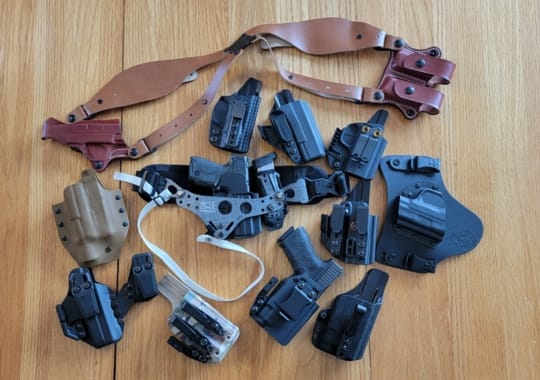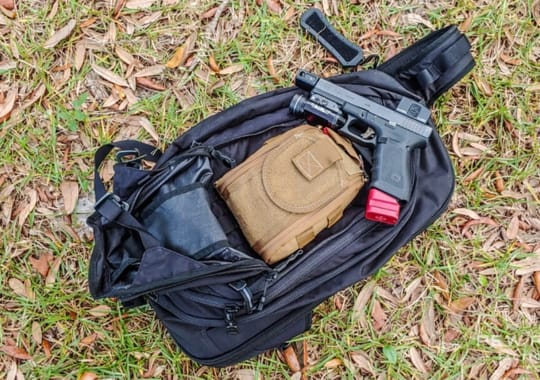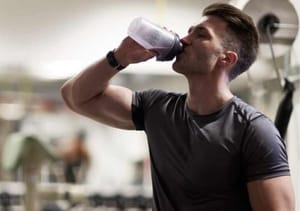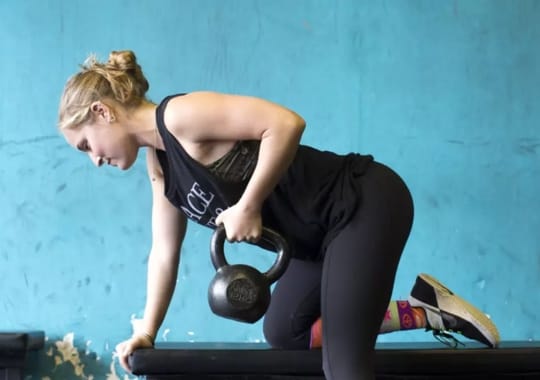Pros and Cons of concealed and open carry. Watch this educative video.
As Amazon affiliates we may earn a commission if you purchase a product at no cost to you.
The debate between concealed carry and open carry of firearms is a contentious issue with strong arguments on both sides. Each method of carry has its own advantages and disadvantages, which individuals must carefully consider based on their lifestyle, comfort level, and legal considerations. In this discussion, we will explore the pros and cons of both concealed and open carry to provide a comprehensive overview of the factors that individuals should weigh when making this important decision.
Concealed Carry Pros
- Low attention: Carrying a concealed weapon allows individuals to blend into their surroundings without drawing attention to themselves. This reduces the likelihood of being targeted by criminals who may perceive openly armed individuals as potential threats, as well as minimizing the risk of causing panic among the general public.
- Element of surprise: Concealed carry provides a tactical advantage by maintaining the element of surprise. In a self-defense situation, this can disorient criminals and give the carrier a critical moment to react, potentially deterring or stopping an attack.
3. Variety of holster options: Concealed carry holsters come in a wide range of styles, materials, and configurations, allowing carriers to choose a holster that best suits their personal preferences, comfort, and lifestyle. Whether it's inside-the-waistband, outside-the-waistband, shoulder, or ankle holsters, carriers can find a solution that works best for them.

Concealed Carry Cons
1. Draws attention based on clothing choice: Carrying a concealed weapon often requires individuals to adapt their clothing choices to accommodate the firearm , which can inadvertently draw attention. This may include wearing looser or heavier clothing to conceal the weapon, which could make them stand out in certain environments and potentially attract the attention of criminals looking for armed targets.
2. Can be uncomfortable: Carrying a concealed weapon can be uncomfortable, especially for long periods or when seated or driving. The added weight and bulk of the firearm and holster can dig into the body, causing discomfort and making it challenging to maintain a natural posture.
- Risk of skin irritation from sweat: Carrying a concealed weapon, particularly in warmer climates or during physical activity, can lead to increased sweating, which may result in skin irritation. Certain firearm types, such as those with rough grips or sharp edges, can exacerbate this issue, potentially causing discomfort or even minor injuries.
Open Carry Pros
- Potential deterrent for criminals: The visible presence of a firearm can act as a deterrent to potential criminals, as they may be less likely to target someone who is openly armed. This can help create a safer environment for the carrier and those around them.
- No risk of skin irritation or discomfort: Unlike concealed carry, open carry does not require individuals to wear specific clothing or holsters to conceal the firearm. This eliminates the risk of skin irritation or discomfort that can occur from carrying a concealed weapon, particularly in warm or humid conditions.
- Faster access to the firearm: Open carry allows for quicker and easier access to the firearm in the event of a threat or emergency. This enhanced response time can be crucial in situations where every second counts, potentially allowing the carrier to defend themselves or others more effectively.

Open Carry Cons
- Draws significant attention: Openly carrying a firearm can draw significant attention from the public, which may lead to uncomfortable interactions or even involvement with law enforcement. In some areas, open carry may be legal but uncommon, leading to misunderstandings or concerns from bystanders.
- Risk of gun catching on objects: The exposed nature of open carry can increase the risk of the firearm catching on objects, such as furniture or door frames. This can potentially cause damage to the firearm or create a dangerous situation if the firearm is dislodged from its holster.
- Easier access for criminals: While some holsters for open carry have multiple stages for firearm retrieval, the fact that the firearm is openly visible can make it an easier target for criminals looking to disarm someone. This risk is higher in situations where the carrier may be distracted or unaware of their surroundings.
Recommended Article

Frequently Asked Questions FAQs
What is the most comfortable carry position?
The most comfortable carry position depends on the individual. However, holding your baby close to your body in an upright or curled position is generally recommended. By keeping them close and secure, you can provide them with a sense of security while ensuring they are well-supported. A waist belt or shoulder straps can help distribute the baby's weight evenly across your body for maximum comfort. It is important to ensure you are not carrying your baby too low, as this can strain your back muscles.
What makes a good concealed carry?
A good concealed carry firearm should be light, small, and easy to draw quickly. It should also have a reliable safety mechanism, be accurate and comfortable to shoot, and have an appropriate caliber for your intended purpose. Your ammunition should have reliable performance characteristics and feed reliably in your gun. Familiarity with the handgun is paramount for safe and effective concealed carry. Practice drawing from your holster and become comfortable shooting your firearm before carrying it for self-defense.
What is the most popular concealed carry position?
The most popular handgun concealed carry position is the "strong side" position, which means your firearm is carried on the same side as your dominant hand. This makes it easy to draw your firearm quickly and efficiently. However, other popular positions include appendix carry (carrying in a holster at the front of the waistband), cross-draw (carrying on the opposite side of your dominant hand), and small-of-the-back carry (carrying at the lower back). You can try different positions to find the most comfortable, convenient, and secure option.
Conclusion
Both concealed carry and open carry have their own set of pros and cons that individuals must consider when deciding how to carry a firearm. Concealed carry offers the advantage of low visibility, reducing the likelihood of attracting attention and maintaining an element of surprise in self-defense situations. However, it can be uncomfortable and may draw attention based on clothing choices. On the other hand, open carry provides a visible deterrent to criminals and allows for faster access to the firearm, but it also draws significant attention and carries the risk of the gun catching on objects. Ultimately, the choice between concealed and open carry depends on individual preferences, comfort levels, and the specific laws and regulations of the area in which one resides.










